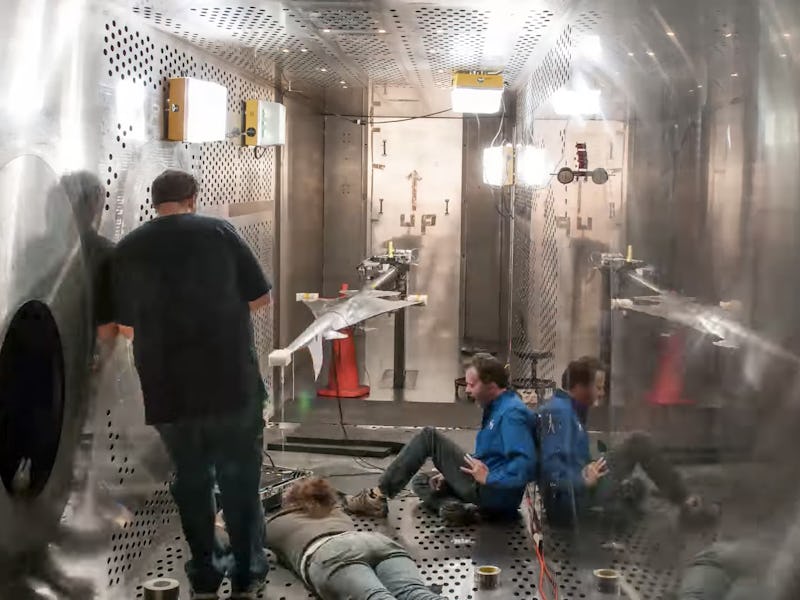
Supersonic passenger travel hasn’t been a thing since the Concorde shut down in 2003, when extremely rich people got bored of flying from New York to Paris in three and a half hours, but NASA is doing its best to bring it back. The space agency’s best hope at making the plot of The Parent Trap feasible again is the Quiet Supersonic Technology (QueSST) X-plane, a preliminary design of a super-fast aircraft that could change intercontinental travel in the future.
NASA doesn’t have the whole thing worked out yet — right now, it’s testing a nine percent scale model of the QueSST plane in a storage shed-sized (about eight by six feet) wind tunnel at NASA’s Glenn Research Center in Cleveland. The compact tunnel allows the NASA engineers to vary the windspeed on the model plane between 150 and 950 miles per hour, simulating the huge range of wind speeds the QueSST will be exposed to.
“We’ll be measuring the lift, drag and side forces on the model at different angles of attack to verify that it performs as expected,” aerospace engineer Ray Castner, who leads propulsion testing for NASA’s QueSST effort, said in a press release. “We also want to make sure the air flows smoothly into the engine under all operating conditions.”
The QueSST’s secret is in its shape. NASA recently discovered a way to aerodynamically shape an aircraft that will almost eliminate the sonic boom heard at ground level, meaning that QueSST planes flying overhead won’t sound like fighter jets or bombs going off.
“Our unique aircraft design is shaped to separate the shocks and expansions associated with supersonic flight, dramatically reducing the aircraft’s loudness,” said Peter Losifidis, QueSST program manager at Lockheed Martin Skunk Works. “Our design reduces the airplane’s noise signature to more of a ‘heartbeat’ instead of the traditional sonic boom that’s associated with current supersonic aircraft in flight today.”
NASA is going to continue testing the QueSST in the wind tunnel until the middle of the year, at which point it will be up for approval for a full-size prototype build.